Mastering vegan cooking is a badge of cooking mastery (not a leash on a chef’s creativity). The best chefs are able to transform any ingredient into an incredible meal, and a solid vegan chef is one who shows technical ability with the ingredients to create vegan restaurant menu items. As vegan diners expect more from restaurants, you should be focused on the menu items and types of experiences you offer to them. Below is what you should know and look for when coming up with vegan menu ideas in your restaurant.
Key Takeaways:
- Remember that while a vegetarian diet can contain some animal byproducts—depending on the variation—vegan dishes contain no animal products or byproducts.
- Offering vegan options on your menu only opens up the opportunity for more customers.
- Vegan cooking should showcase your skills as a chef and your understanding of ingredients.
- You can choose to have dedicated menu items that can be swapped to vegan options or have a separate menu for vegan diners.
- Aim to create popular items on your menu with vegan alternatives when it makes sense and when it does not feel forced.
Vegan Menu Basics
Vegan cooking, in my opinion, shouldn’t look to close any gaps of flavor. When we cook vegan food, we should aim to make the food we are cooking as delicious as possible using the ingredients and skillset we have. I often find that cooks will seek to replicate the flavor of a burger or other meat-based product, and in chasing this, tend to lose sight of what makes the vegan meal and its ingredients so great in the first place.
Below are some of the basic ingredients you should aim to have on hand when creating vegan menu items.
- Tofu and tempeh: High sources of protein that can be incorporated into a vegan menu. Additionally, seitan is another wheat-based protein source that vegans consume.
- Beans and legumes: Great protein sources that are versatile and offer great flavor and body to a meal. Cook them whole, mash them, puree them, or add them to other recipes.
- Nuts and nut butter: Can mimic fatty textures and offer a delicious mouthfeel for many items.
- Fruits and vegetables: High-quality and thoughtfully sourced fruits and vegetables should be the star of the show on this menu. Ensuring your producers give you the best ingredients to showcase is key.
- Pasta and grains: Vegan pasta and other grains are key as a base to dishes and to add carbs to the overall meal.
- Mushrooms: I am a huge fan of mushrooms and love cooking them in a variety of ways. Look into maitake, oyster, and lion’s mane varieties for heartier options for your menu.
- Dairy substitutes: Such as nut milk or soy milk are a must for a variety of applications.
- Alternative sweeteners: Pure agave is a great sweetener to substitute for honey. It is delicious, has some great health benefits, and can be utilized in a variety of ways.
- Plant-based meat and cheese: Good options to have on hand. Just be sure you stand by their quality.
To find quality vegan meat and dairy substitutes, be sure to taste multiple both alone and in recipes to see which ones perform best as compared to one another. Additionally, ensure other members of your team taste and give their opinions to find the best product overall.
Vegan Appetizers & Starters
The start of a meal is a great time to showcase what it is you bring to the table as a chef. The beauty of appetizers is that you can concentrate big flavors into small bites, offering your guests something to enjoy before the main course. Use some of these vegan appetizer ideas below to impress your vegan diners right at the beginning of the meal.
Baba Ganoush & Pita
One of my favorite ways to start out a vegan meal is to serve baba ganoush—heavily roasted eggplant blended with lemon juice, salt, and parsley. It is delicious, has a very appealing texture, and in my opinion, is a fine example of how you can create deep, savory flavors in a vegan dish. The creamy yet fulfilling texture of this dip, paired with the smoky eggplant flavor and fresh pita, offers a warm appetizer that hits on savory notes while also highlighting the versatility a vegetable can provide.

Empanadas
The empanada is an excellent way to showcase a ton of veggies and flavor in a small bite, and the dough can be made without animal products. The fillings can contain savory items such as beans, caramelized onions, and items such as tempeh or even plant-based proteins. Rich and flavorful sauces can also carry these fillings, letting you really deliver on flavor. Empanadas are a great way to serve vegan food without really even bringing to attention that meat is not included.

Cauliflower ‘Wings’
Cauliflower served “Buffalo-style” is an easy way to evoke nostalgia and bring a comfort food classic into a vegan menu. Creating delicious sauces for breaded or fried cauliflower to be tossed in allows you to take these wings in a classic or more unique direction. Think of flavors such as lemon pepper, BBQ, spicy harissa, or teriyaki, and your options for vegan cauliflower wings can expand greatly.

Plant-based Sliders
I am actually a huge fan of the flavor of Impossible Meat. As a vegan option, it is one ingredient that delivers the umami and mouthfeel of a regular burger patty. Making sliders out of Impossible Burgers is something I have done for catering, large-scale cooking, and even at home, and they always turn out excellent. Be sure to have a lot of vegan-friendly condiments to offer, and you are all set. Season your patties well, serve them on a delicious toasted bun, and add tasty toppings to really deliver on this plant-based take on a classic appetizer.

For vegan cooking, I recommend trying bigger brands and how they serve high-performing items at scale. This will give you insight into what the general consumer craves.
Vegan Caesar Salad
Making Vegan Caesar salad is possible, and it does take some trial and error. But if you can find the right blend of flavor, then a vegan Caesar salad is something that can be very popular for vegan diners, as it is a menu staple and classic. The basics behind a vegan Caesar are usually hummus or tahini, lemon juice, capers, and Dijon mustard. There are plenty of recipes out there on how to make this, so be sure to experiment with some and come up with your own. I think fried oyster mushrooms would add a nice crunch and some meaty and umami flavor as a salad topping.
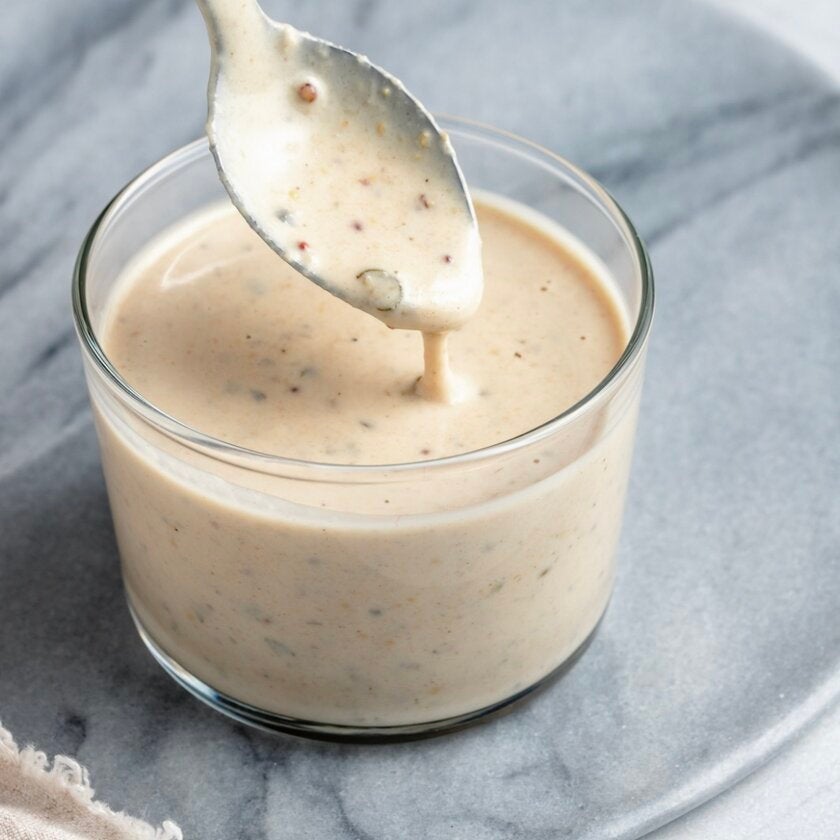
Vegan Entrees & Main Courses
Vegan main courses need to be satisfying in their flavor, and they need to warrant the price of a main course on your menu. That being said, they should be thought out—you should focus on how you would feel if you were the consumer paying for this main course. So many times, I have seen vegan mains be a throwaway on menus. Make sure your vegan entrees hit with guests and showcase the skills you have as a chef. Below are some ideas to get you going.
Carne Asada Tacos
Tacos are an excellent main course for a vegan menu, as you can use vegetables or plant-based protein in freshly warm corn tortillas to serve your guests. I suggest seasoning Impossible Meat with carne asada spices and serving these tacos with avocado chipotle mayo, pickled red onions, and a side of delicious black beans. You do not need to veer off too much from the original dish of carne asada, and as long as you hit your spice profile right on the plant-based protein, your customers will love it.
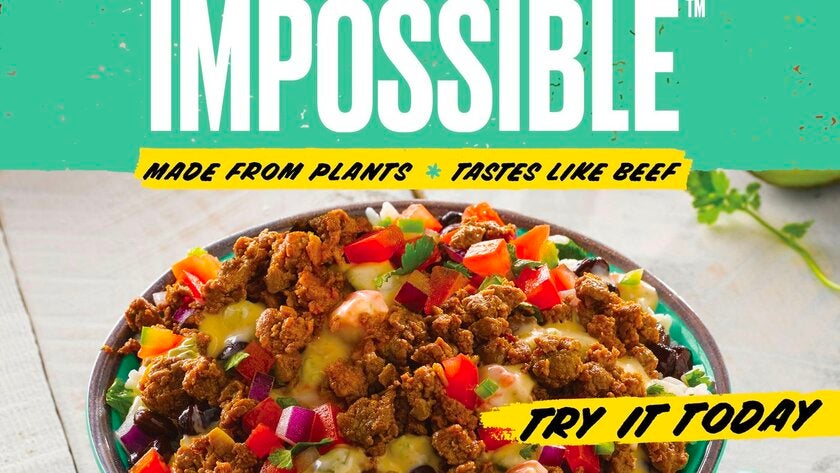
Tofu Coconut Curry
Coconut milk is a favorite ingredient of mine in vegan cooking due to its wonderful flavor and texture. It is very easy to make an excellent curry with vegetables, the right spice blend, and coconut milk. I love hard-roasting tofu and adding it to my curry for some protein. Serve over warm rice and top with fresh cilantro, and you have a very tasty dish full of curry vegetables, tasty tofu, and a delicious sauce that delivers a pleasing mouthfeel when eaten.

Tempeh Vegan Shepherd’s Pie
Shepherd’s pie is a classic dish that anyone will crave. A vegan version combines heavily roasted mushrooms, boldly seasoned tempeh, and whipped mashed potatoes. Shepherd’s pie is topped with mashed potatoes, so sub in vegan butter or even a small amount of nut butter for creamier and more “buttery” potatoes. Additionally, be sure to use red wine to deglaze your pan and deliver a layer of flavor that will make the filling rich and enjoyable. You can even serve these in personal cast iron pans to wow your guests.

Pad Thai
Another incredibly popular dish you can make without any plant-based products is pad thai. Rice noodles are the base of pad thai, making this dish a great candidate for a vegan entree. Marinate tempeh or tofu in miso and soy sauce before cooking for a deep and rich umami flavor. Then, use soy sauce, carrots, bean sprouts, carrots, peanuts, and other classic pad thai ingredients to make this dish. It is an easy-to-make dish that can have a strong umami flavor without meat due to the ingredients it is usually made with.

Mushroom Pot Pie
Making a creamy pot pie filling using root vegetables, roasted mushrooms, and a base such as cashew butter is something that is both creative and brings a hint of nostalgia to diners when they are starting their meal. I love it when restaurants create a play on food that many have grown up with, and I think offering a very savory vegan pot pie as a starter is an excellent way to do this. Nailing classic dishes like this for vegan diners is something that can be the reason they come back to you over other restaurants time and time again.
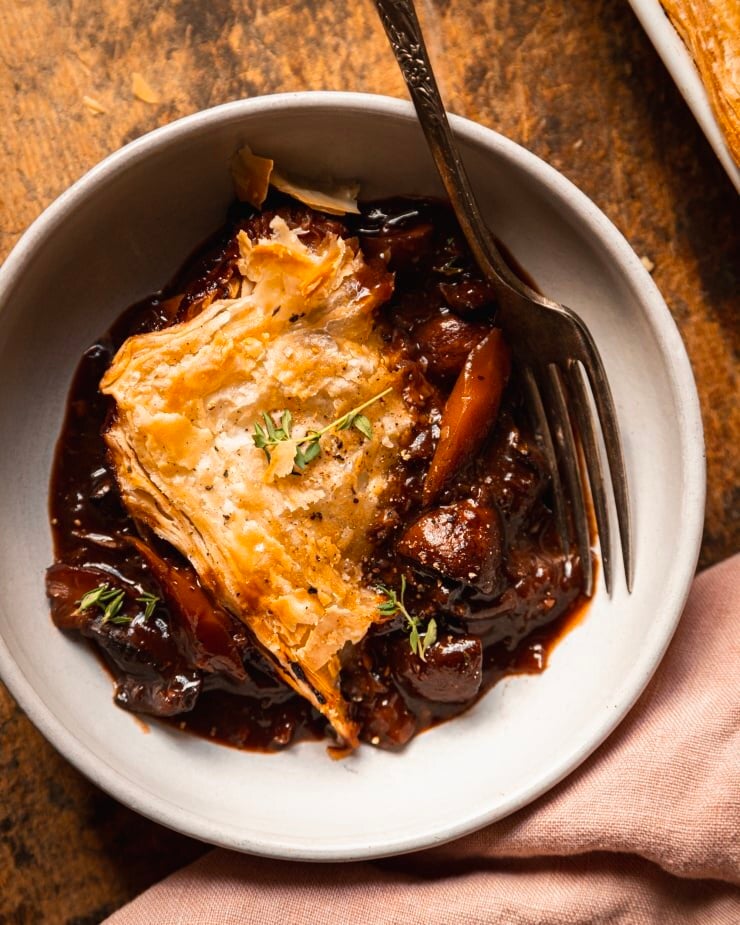
Lentil Bolognese
Another dish I think you should highly consider is a lentil bolognese. Lentils are a good source of protein and offer a texture that mimics ground beef in meat-based sauces such as bolognese. The key to vegan bolognese is to sweat down your veg and then caramelize your tomato paste for a deeply rich flavor that carries through the rest of the sauce. There are plenty of vegan, non-egg-based pastas on the market, so be sure to find the right one for you. You can even make your own “Parmesan cheese” out of ground-up cashews, nutritional yeast, and garlic powder, so get creative with this popular pasta dish!

Vegan Side Dishes
Below are some simple side dishes you may consider including in your menu.
Polenta or Grits
Polenta and grits can be flavored with a variety of different ingredients and seasonings and are a great base for a main course. Using nutritional yeast for a “cheesy” flavor or topping with roasted vegetables to accompany an entree is a great way to offer this awesome dish as a vegan side.

Vegan Mac n’ Cheese
Vegan mac n’ cheese is possible to make. There are a ton of recipes out there to find, but using butternut squash powder or nutritional yeast can help you make an excellent vegan cheese sauce. Also, nut butter, such as cashew butter, allows you to make a super creamy texture possible. Mac n’ cheese is a fan favorite side dish that, if done right, can really impress your vegan diners since it is such a crave-able food.

Ask your vendor to sample vegan cheeses, nut butter, and all dairy replacements they may have to see what works best for your kitchen and cooking style.
Roasted Vegetables
Sometimes the simple things on a menu are the best. Nothing beats well-seasoned and roasted vegetables. For me, asparagus, Brussels sprouts, sweet potatoes, carrots, and mushrooms come to mind. Vegetables are a huge part of a vegan diet, so expert vegetable cookery can go a long way to making your customers happy. Play around with seasonings, use seasonally fresh produce, and execute your skills to make delicious roasted vegetables that can go with any main entree.
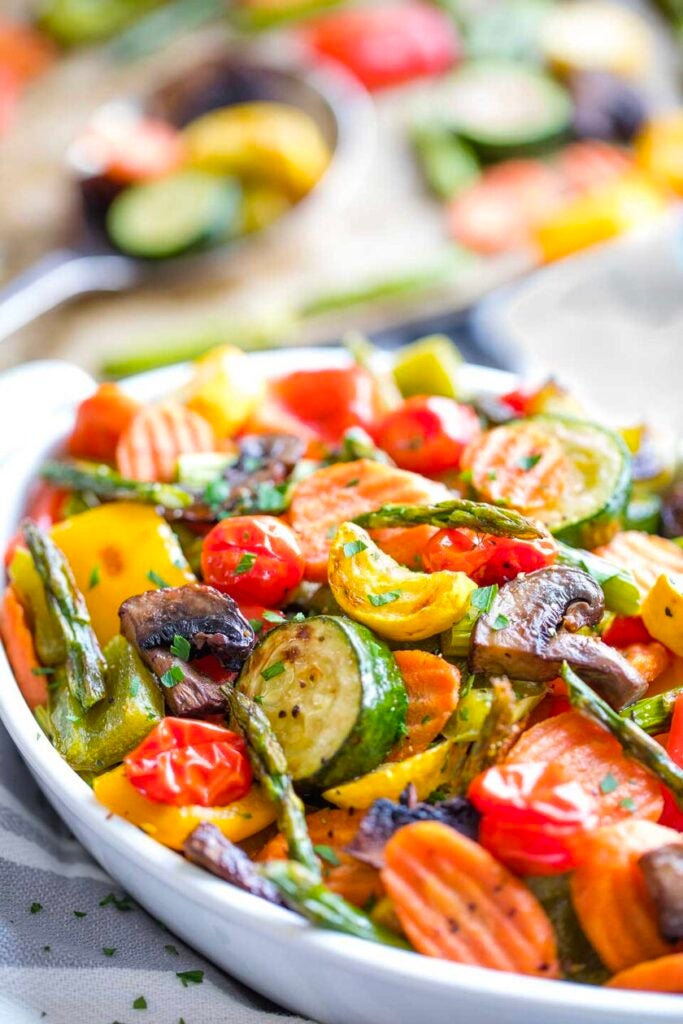
Vegan Desserts
Having vegan dessert options is key for your restaurant menu. You do not want vegan customers enjoying their meals only to be disappointed due to a lack of offerings. Below are some vegan dessert menu items you can include in your restaurant:
Frozen Desserts
Sorbets are often just fruit or fruit puree and sugar blended and frozen together. This makes them a naturally good fit for vegan diners. Ice creams made from cashew milk or coconut milk are also options in the frozen dessert space, and many restaurants with the right equipment offer some killer vegan ice creams. Depending on your capacity of production, you can source high-quality frozen desserts or make them yourself. Frozen desserts like ice cream are very popular, so you want to ensure your vegan diners can have this experience.
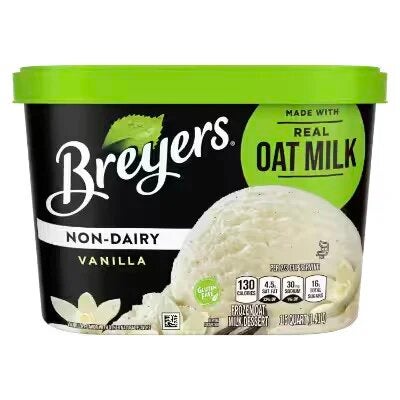
Zucchini Bread
Zucchini bread is one of my favorite desserts that I do not see enough of on restaurant menus. These loaves are easy to make—and easy to make vegan. Other breads, such as banana bread, work too. Serving each diner a small loaf of zucchini bread is such a nice touch.

Vegan Tiramisu
Vegan tiramisu is often made with silken tofu, yogurt, espresso, and vegan-friendly lady fingers. There are other ways to achieve this dessert, but I think your vegan diners would be surprised to be offered a vegan tiramisu to end their meal. It is a dish many would not go to right away for vegan options, but it is creative and is something different for those customers tired of sorbets or other fruit-forward desserts. It is a classic that’s sure to leave your customer feeling satisfied.

Designing a Vegan-friendly Restaurant Menu
When it comes to designing a restaurant menu, you want to cater to as many customers as possible. Consider the following:
- For a standard restaurant menu, I recommend having at least three to five items in each section of the menu that can be turned vegan. That is, for appetizers, entrees, and desserts.
- If your menu is smaller, then at least one to two menu items is ideal.
- For a fully vegan menu, Having around eight to 10 appetizers, eight to 10 main entrees, four to six sides, and five to seven desserts would be the best-case scenario. Again, this can all change based on your concept.
When it comes to how you incorporate vegan items into your menu, you have two options. One option is to have dedicated menu items that can be swapped to vegan whenever they are ordered. Another option is to have a vegan menu that is separate for vegan diners or only highlights vegan options they can have. I am more in favor of swapping in vegan dishes and having vegan dishes dispersed through my main menu, as this does not have diners feel left out, and it shows you are proficient in cooking both meat-based and plant-based items.
Tips for Highlighting Your Vegan Menu
Below are some of the best tips on highlighting vegan items on your menu:
- Include a label, like a “V,” next to vegan items or items that can be made vegan for ease of access on menus.
- For a digital menu, include a vegan breakout section for vegan-specific dishes.
- Have wait staff get into the habit of asking for any dietary restrictions or dietary lifestyle choices. Have them trained to accommodate and point out options for guests with dietary limitations or specific lifestyle choices.
- Highlight vegan-friendly options on social media in your media posting rotation. Offer specials or share the cooking method behind how a vegan dish is made.
- If a tasting menu is offered, be sure to have a plant-based option as well.
- Highlight any specific branded ingredients, like the Beyond Burger, so that customers with brand recognition gravitate toward those menu items.

Frequently Asked Questions (FAQs)
These are some of the most common questions I encounter about vegan restaurant menu ideas.
Bottom Line
Vegan cooking is an exciting way to showcase your culinary skills. Not all vegan menu items need to be swapped out for meat-based recipes. You should have a catalog of veg-forward recipes that can stand on their own within your menu. Cook with the end consumer in mind, and most importantly, make sure whatever menu item you offer is delicious. Good-tasting vegan food will always win, and it will keep customers coming back to you for high-quality vegan options.



